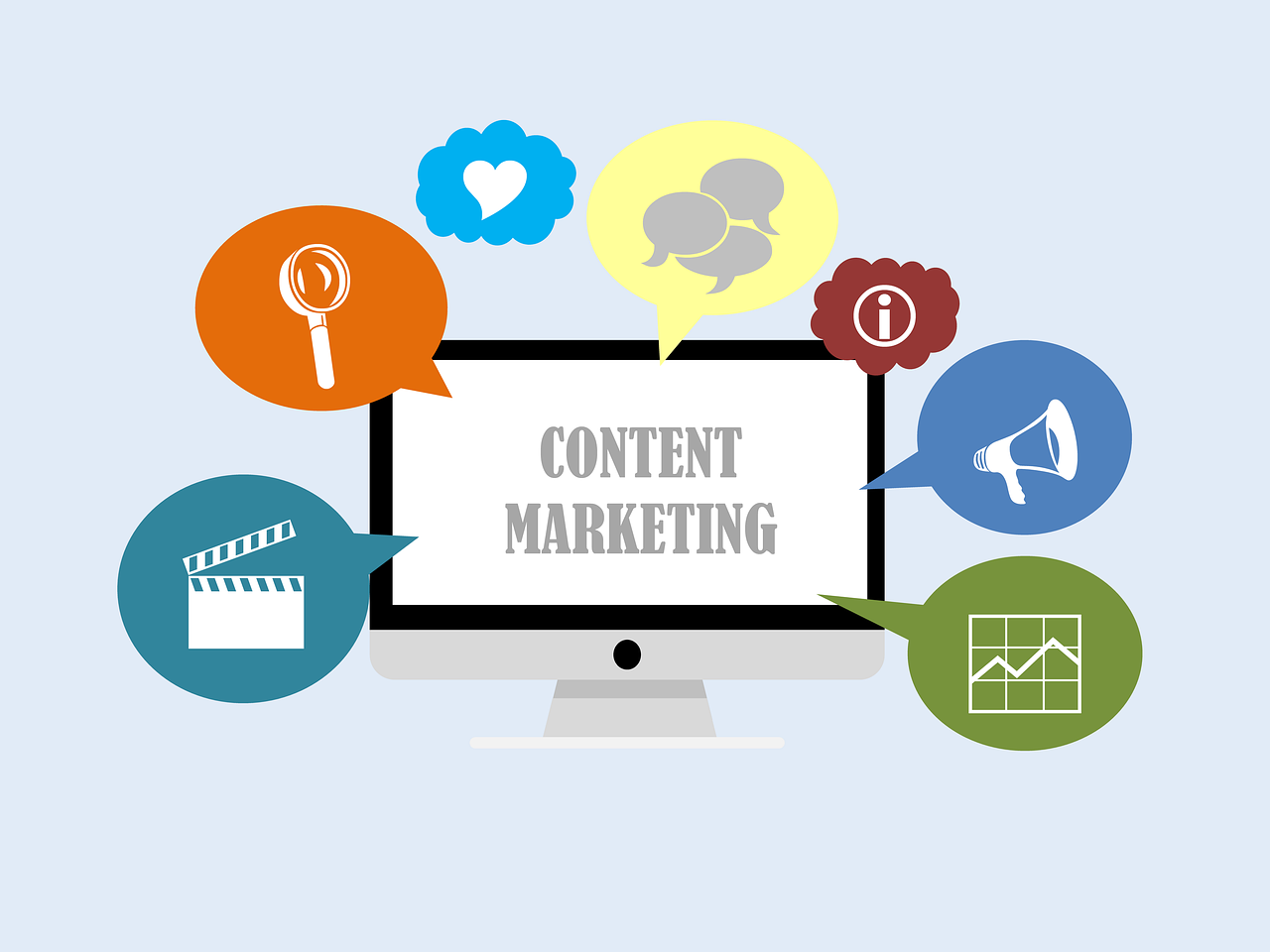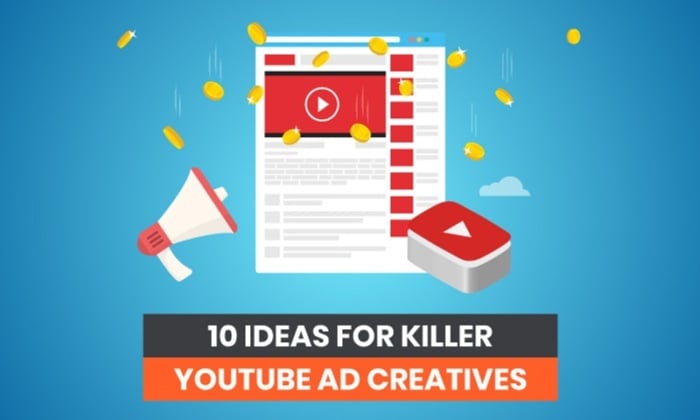Email Marketing: An In-Depth Guide via @sejournal, @BrianFr07823616
From developing a strategy to building a list to tracking results, this guide covers everything you need to know to start marketing via email. The post Email Marketing: An In-Depth Guide appeared first on Search Engine Journal.

Email has revolutionized the way people communicate. From facilitating remote work to monitoring bank balances, it has become an integral part of everyday life.
It has also become a powerful tool for marketers. It has changed the way brands and customers interact with each other, providing incredible opportunities to target audiences at each stage of the buyer’s journey.
In other words, when it comes to getting the most bang for your marketing buck, nothing matches the power of email.
Providing an average return on investment of $36 for every $1 spent, email marketing is one of the most profitable and effective ways of reaching your targets.
Globally used by more than 4 billion people, it has unparalleled reach and is perfect for every step of the buyer’s journey, from generating awareness to encouraging brand loyalty.
If you’re not currently using email marketing to promote your business, you should be.
But to reap the biggest benefits, you need to do more than just dash off a message and sending it out to your contacts. You need a strategy that will help you nurture relationships and initiate conversations.
In this piece, we’ll take an in-depth look at the world of marketing via email and give you a step-by-step guide you can use to launch your own campaigns.
What Is Email Marketing?
If you have an email address of your own – and it’s probably safe to assume that you do – you’re likely already at least somewhat familiar with the concept of email marketing.
But just to avoid any potential confusion, let’s start with a definition: Email marketing is a type of direct marketing that uses customized emails to inform customers and potential customers about your product or services.
Why Should You Use Email Marketing?
If the eye-popping $36:1 ROI stat wasn’t enough to convince you to take the plunge, here are some other key reasons you should use email marketing to promote your business:
Email marketing drives traffic to your website, blog, social media account, or anywhere else you direct it. It allows you to build a stronger relationship with your targets via personalization and auto-triggered campaigns. You can segment your audience to target highly specific demographics, so you’re sending messages to the people they will resonate with most. Email marketing is one of the easiest platforms to version test on, so you can determine exactly what subject lines and calls-to-action (CTAs) work best.Even better, you own your email campaigns entirely.
With email, you own your marketing list and you can target your leads however you like (so long as you stay compliant with CAN-SPAM laws).
There is no question that you should be using email marketing as part of your overall marketing outreach strategy.
Now let’s look at some of the different ways you can do that.
What Are The Types Of Email Marketing?
For every stage of the sales funnel, there’s a corresponding type of email marketing. Here are some of the different types you can use to engage your audience and generate results.
Promotional Emails
When you think about email marketing, these types of messages are probably what you think of.
Used to promote sales, special offers, product releases, events, and more, these are usually one of the least personalized types of emails and tend to go out to a large list.
Usually, promotional campaigns consist of anywhere from 3 to 10 emails sent over a specified time frame. They have a clear CTA that encourages the recipient to take the next step of visiting your site, booking an appointment, or making a purchase.
Informational Emails
This type of email includes company announcements as well as weekly/monthly/quarterly newsletters.
They may include information about new products, company achievements, customer reviews, or blog posts.
The CTA is usually to visit your website or blog to learn more about what’s happening.
Welcome Emails
Sent to new customers or people who have filled out a form on your website, welcome emails encourage recipients to learn more about your company or offering.
These commonly include trial offers, requests to book a demo, or other offerings a new customer will find valuable.
Nurturing Emails
Any salesperson will tell you the importance of creating multiple touchpoints with potential customers.
Lead nurturing emails focus on building interest in people who are drawn to a particular offering.
The goal of these messages is to push them to the consideration stage of the buying journey.
Re-engagement Emails
Nurturing emails’ slightly more aggressive brother, re-engagement emails are used to warm up customers who haven’t been active lately.
These tend to be more personalized, as you’ll want to show the subscriber that you know and understand the challenges they’re facing.
Survey/Review Emails
User generated content (UGC) lends your brand an authenticity you simply can’t achieve on your own.
One of the best ways to generate this is via emails soliciting feedback from your customers.
This type of email also gives you insights into your brand’s relative strengths and weaknesses, so you can improve your offerings.
There are a number of other types of emails you can use as part of your marketing efforts, including seasonal emails designed to capitalize on holidays or events, confirmation emails to reassure recipients their purchase was completed or their information received, and co-marketing emails that are sent with a partner company.
In fact, it’s email marketing’s sheer versatility that makes it the cornerstone of any successful marketing strategy. You merely need to decide what you hope to accomplish, then create your campaign around it.
Now, let’s take a closer look at creating and managing your own email marketing.
How Do You Perform Email Marketing?
Step 1: Establish Your Goals
The section above should have made it clear that the type of email campaign you’ll run will depend on what you’re hoping to accomplish. Trying to do everything with one email will lead to confused recipients and a watered-down CTA.
Set one goal for your campaign, and make sure every email in the series works toward it.
Step 2: Build Your List
Now it’s time to determine who will be on the receiving end of your campaign. You do this by building your email marketing list – a process you can approach from several directions.
The most basic way to build an email list is by simply importing a list of your contacts into your chosen email marketing platform (more on that later).
One caveat: Before you add anyone to your list, make sure they have opted into receiving emails from you – otherwise you’ll run afoul of the CAN-SPAM Act guidelines mentioned above.
Other options for building a list from scratch via a lead generation campaign: provide potential customers with discounts, compelling content, or something else of value and make it easy for them to subscribe and you’ll generate high-quality leads.
Some marketers buy or rent email lists, but in general, this isn’t an effective way to perform email marketing.
The primary reason you don’t want to do this is because of lead quality. You’re not going after people who are interested in your brand but instead are blindly targeting leads of questionable quality with emails they haven’t opted in to.
In addition to violating consent laws, which could potentially hurt your IP reputation and email deliverability, you risk annoying your targets instead of encouraging them to try your offering.
Step 3: Create Your Email Campaign
Now that you know who you’re targeting and what you’re hoping to achieve, it’s time to build your campaign.
Email marketing tools like HubSpot, Constant Contact, and Mailchimp include drag-and-drop templates you can employ to create well-designed and effective email campaigns.
We’ll dive deeper into these platforms a bit later, but now, let’s talk about some fundamentals and best practices to help you get the best results:
Make your emails easy to read – No one wants to read a long wall of text. Structure your emails using strategically placed headers and bulleted lists for easy scanning. Use images – Ideally, you want your emails to capture the reader’s eye and attention. Visuals are a great way to do this. Write a compelling subject line – The best-written email in the world is useless if no one opens it. That makes a compelling, intriguing subject line paramount. Don’t be afraid to try different iterations, just be sure to keep it short. Add personalization – Emails that are targeted to a specific person, including addressing them by name, are more likely to generate responses. Your email marketing platform should allow you to do this with relative ease. Make conversion easy – If you want click-throughs, you need to make it easy for readers. Make sure your CTA is prominent and clear. Consider your timing – As with most types of marketing, email campaigns tend to perform better when they’re properly timed. This could mean a specific time of day that generates more opens, a time of the week when purchases are more likely, or even a time of year when your content is most relevant. This will probably require some experimentation.Step 4: Measure Your Results
You’re not going to get your email campaigns right the first time. Or the second. Or the fifth. In fact, there’s really no endpoint; even the best campaigns can be optimized to generate better results.
To track how yours are performing, you’ll want to use the reports section of your email marketing platform. This will help you understand how people are interacting with your campaigns.
Use A/B testing to drill down into what’s working best.
Generally, you’ll want to look at key metrics like:
Open rate and unique opens. Click-through rate. Shares. Unsubscribe rate. Spam complaints. Bounces (the number of addresses your email couldn’t be delivered to).Choosing An Email Marketing Platform
Manually sending out emails is fine if you’re only targeting three or four people. But if you’re trying to communicate with dozens, hundreds or even thousands of targets, you’re going to need some help.
But there are currently hundreds of email marketing platform on the market. How do you choose the right one for your unique needs?
Should you just go with one of the big names like HubSpot, Klaviyo, or Mailjet? How do you know which one is right for you?
While it may initially feel overwhelming, by answering a few questions you can narrow down your options considerably.
The very first thing you need to determine is your budget. If you’re running a small business, the amount you’re willing to spend on an email service platform is probably considerably less than an enterprise-level company.
If you’re an entrepreneur, you’ll probably find that a lower-priced version of a platform like Sendinblue or Constant Contact provides you with all the functionality you need.
Larger companies with bigger marketing budgets may wish to go with an email marketing platform that provides higher levels of automation, more in-depth data analysis and is easier to use. In this case, you may prefer to go with a platform like Mailchimp or Salesforce’s Pardot.
The good thing is that most of these email service providers offered tiered pricing, so smaller businesses can opt for more inexpensive (or even free) versions that offer less functionality at a lower price.
The next thing to consider is the type of email you want to send.
If your primary send will be newsletters, a platform like SubStack is a great choice. If you’re planning on sending transactional emails, you may want to check out Netcore Email API or GetResponse.
For those of you planning on sending a variety of marketing emails, your best choice may be an option that covers multiple email types like ConvertKit or an omnichannel marketing tool like Iterable.
You can narrow down your options by determining your must-have features and internal capabilities.
Some things you’ll want to consider include:
The size of your lists. Your technical skill level. Your HTML editing requirements. Template variety. Your need for responses/workflows. A/B testing needs. Industry-specific features.While there is significant overlap in functionality between email marketing platforms, each has some variation in capabilities.
Ideally, you want something that will integrate with your other marketing tools to help take the guesswork out of the equation.
You should request demos and trials of your finalists to find which is best for your needs. If you’re working with a team, be sure to loop them in and get their feedback.
Tips For Maximizing Your Results
Email marketing is a powerful tool for any business. But there’s both science and art to it.
Here are some additional tips to help you get the most from your campaigns:
Avoid being marked as spam – According to HubSpot, there are 394 words and phrases that can identify your email as junk mail. These include “free,” “lowest price,” “no catch” and “all new.” You should avoid these whenever possible. To be doubly safe, have your recipients add you to their safe senders list. Run integrated campaigns – Email marketing serves to amplify the power of other marketing channels. If you’re running sales or promotions, you should include an email aspect. Clean up your list regularly – Keep your email database up to date to ensure deliverability and higher engagement. If a subscriber hasn’t responded to your re-engagement efforts after six months, it’s probably safe to scrub them from your list. Harness the power of automation – Autoresponders are a great way to follow up with customers and subscribers, or strategically target someone after a certain event or action. Learn how to set this up on your email marketing platform and it will save you lots of time while boosting returns.Email Marketing Is A Powerful Tool
There’s a reason why email marketing is prevalent in the modern world – it works.
And that means you should be using it to promote your brand and drive sales.
Hopefully, by this point, you have a good idea of not only what email marketing can do for you, but how it works, and how to create and optimize your own campaigns.
There’s really no better way to connect with our audience and convey the value of your brand.
Now get to work – you have customers to attract.
More resources:
12 Powerful Email Marketing Tips You Need To Know Email Marketing For Small Businesses: A Guide To Getting Started A Complete PPC Marketing Guide For BeginnersFeatured Image: Africa Studio/Shutterstock

 Aliver
Aliver 































